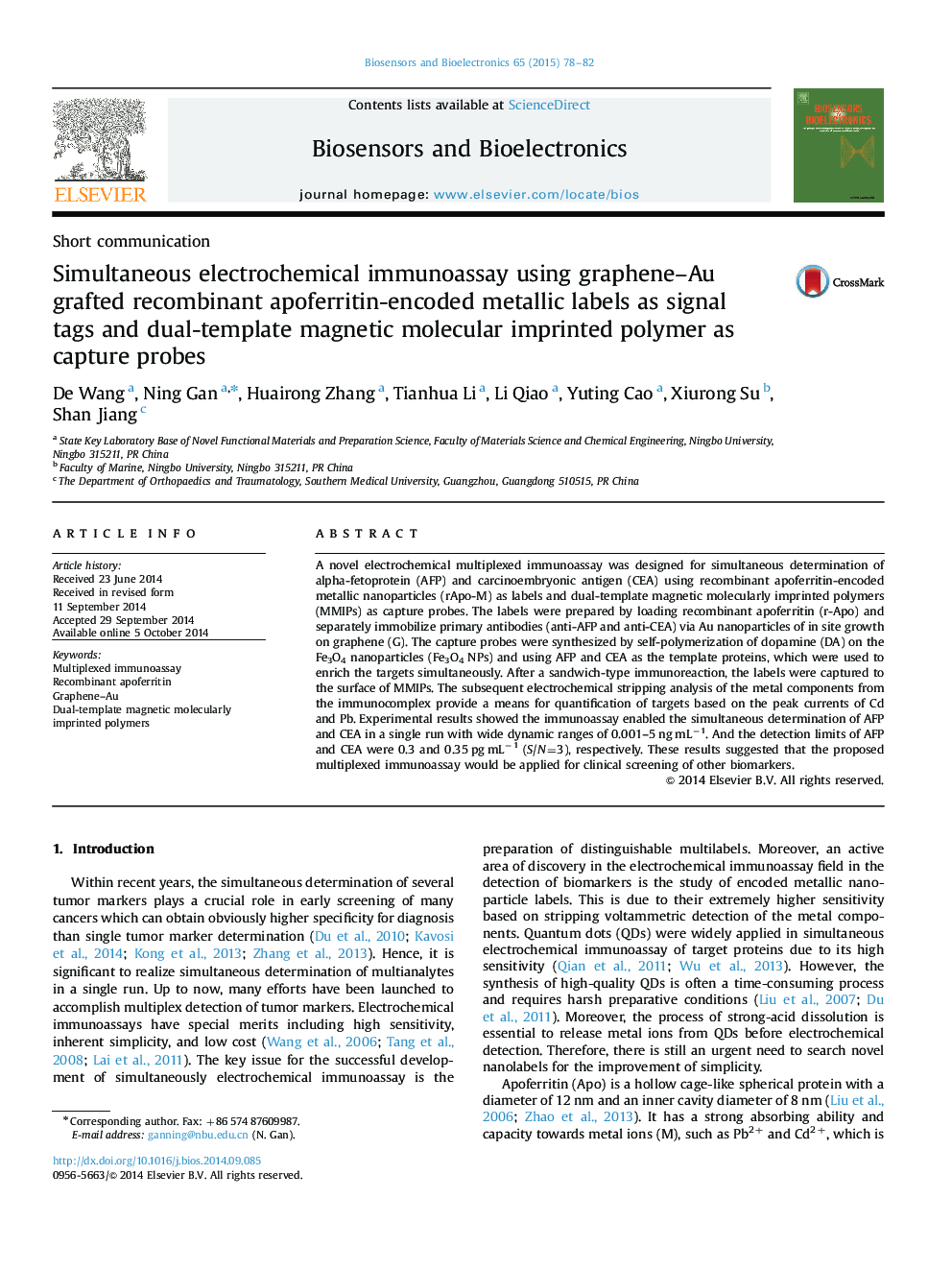| Article ID | Journal | Published Year | Pages | File Type |
|---|---|---|---|---|
| 866402 | Biosensors and Bioelectronics | 2015 | 5 Pages |
•A signal amplification strategy was constructed for simultaneous detecting AFP and CEA based on graphene–Au signal tags.•Recombinant apoferritin nanoparticles with higher binding capability towards metal ions were used as distinguishable trace labels.•A dual-template magnetic molecularly imprinted polymers were utilized as capture probes for specific recognition with target analytes in real serum samples.
A novel electrochemical multiplexed immunoassay was designed for simultaneous determination of alpha-fetoprotein (AFP) and carcinoembryonic antigen (CEA) using recombinant apoferritin-encoded metallic nanoparticles (rApo-M) as labels and dual-template magnetic molecularly imprinted polymers (MMIPs) as capture probes. The labels were prepared by loading recombinant apoferritin (r-Apo) and separately immobilize primary antibodies (anti-AFP and anti-CEA) via Au nanoparticles of in site growth on graphene (G). The capture probes were synthesized by self-polymerization of dopamine (DA) on the Fe3O4 nanoparticles (Fe3O4 NPs) and using AFP and CEA as the template proteins, which were used to enrich the targets simultaneously. After a sandwich-type immunoreaction, the labels were captured to the surface of MMIPs. The subsequent electrochemical stripping analysis of the metal components from the immunocomplex provide a means for quantification of targets based on the peak currents of Cd and Pb. Experimental results showed the immunoassay enabled the simultaneous determination of AFP and CEA in a single run with wide dynamic ranges of 0.001–5 ng mL−1. And the detection limits of AFP and CEA were 0.3 and 0.35 pg mL−1 (S/N=3), respectively. These results suggested that the proposed multiplexed immunoassay would be applied for clinical screening of other biomarkers.
